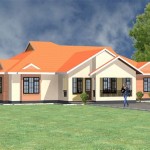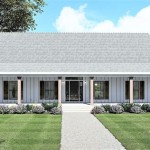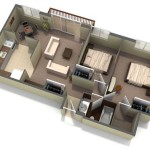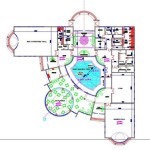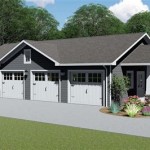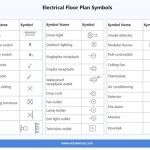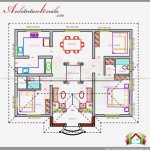House Plans With Indoor Pools: A Comprehensive Overview
The incorporation of an indoor pool into a home design represents a significant investment in lifestyle and property value. House plans that include indoor pools require careful consideration of various factors, ranging from structural integrity and climate control to design aesthetics and regulatory compliance. These plans are not merely an add-on feature but an integral component of the overall architectural and engineering design of the property.
Designing a house with an indoor pool necessitates a holistic approach. It requires expertise in structural engineering, mechanical engineering (HVAC and plumbing), and architectural design. Failing to adequately address these aspects can lead to issues such as structural damage, excessive humidity, and increased energy consumption. The integration of an indoor pool dramatically alters the dynamics of a home, demanding a level of expertise that goes beyond standard residential construction.
Key Considerations for Structural Design
The structural design of a house with an indoor pool is paramount. The pool itself, filled with water, places a substantial load on the building's foundation and supporting structure. This load must be accurately calculated and accounted for in the structural engineering plans to prevent settling, cracking, or other structural failures.
Soil conditions are a critical factor. A geotechnical survey is typically required to assess the soil's load-bearing capacity and stability. Based on the soil analysis, the foundation may need to be reinforced with additional steel, deeper footings, or even pile foundations in areas with unstable soil. The pool's location within the house plan will influence the structural design; a pool located in the center of the house may require a more robust support system than a pool located along an exterior wall.
The materials used in the pool's construction are equally important. Concrete is a common material, but its thickness and reinforcement requirements depend on the pool's size, shape, and depth. Waterproofing is also crucial to prevent water damage to the surrounding structure. This often involves the application of multiple layers of waterproofing membranes and sealants.
Furthermore, the surrounding structure must be designed to withstand the increased humidity and potential for water damage. This may involve using moisture-resistant materials, such as treated lumber, specialized drywall, and mold-resistant insulation.
HVAC and Climate Control
Maintaining a comfortable and healthy environment in a house with an indoor pool demands a sophisticated HVAC system. The high humidity levels associated with indoor pools can encourage mold growth, corrosion, and discomfort for occupants. A properly designed HVAC system is essential to mitigate these risks.
Dehumidification is a primary concern. A dedicated dehumidifier system is typically required to remove excess moisture from the air. The size and capacity of the dehumidifier depend on the size of the pool, the water temperature, and the air temperature. These systems often incorporate heat recovery technology to recapture energy and reduce energy consumption.
Ventilation is also crucial. Fresh air needs to be introduced into the pool room to dilute stale air and remove odors. The ventilation system should be designed to prevent condensation on surfaces, such as windows and walls. This often involves strategically placed air vents and fans to promote air circulation.
Heating is another important factor. The pool water needs to be heated to a comfortable temperature, and the air temperature in the pool room should be slightly warmer than the water temperature to prevent evaporation. The heating system can be integrated with the home's central heating system or be a separate system dedicated to the pool area. Radiant heating systems are often used to provide even heat distribution and reduce energy consumption.
Energy efficiency is a key consideration in the HVAC design. High-efficiency dehumidifiers, heat pumps, and insulation can help minimize energy costs. The HVAC system should also be designed to be easily maintained and serviced to ensure long-term performance.
Architectural Design and Aesthetic Considerations
The architectural design of a house with an indoor pool should seamlessly integrate the pool area with the rest of the home. The pool room should be designed as an extension of the living space, with attention paid to aesthetics and functionality.
Natural light is a desirable feature. Large windows and skylights can bring natural light into the pool room, creating a more inviting and enjoyable space. However, the placement of windows should be carefully considered to minimize glare and heat gain. Low-E glass can help reduce heat transfer and improve energy efficiency.
The materials used in the pool room should be durable, water-resistant, and aesthetically pleasing. Tile is a common choice for pool decks and walls. It is available in a wide range of colors, patterns, and textures. Stone, such as granite or marble, can also be used to create a luxurious look. Wood can be used as an accent material, but it should be treated to resist moisture damage.
The pool's shape and size should be proportional to the size of the room. A small pool in a large room may look out of place, while a large pool in a small room can feel cramped. The pool's depth should also be considered, as a deep pool may require additional safety features, such as railings and ladders.
The design should also incorporate functional elements, such as changing rooms, showers, and restrooms. These amenities should be conveniently located near the pool area. Storage space for pool equipment and supplies is also essential.
Landscaping can play a significant role in enhancing the aesthetic appeal of the pool area. Indoor plants can help create a tropical atmosphere and improve air quality. Outdoor landscaping can also be used to create a privacy screen and enhance the view from the pool room.
Building Codes and Regulations
Constructing a house with an indoor pool requires adherence to local building codes and regulations. These codes are in place to ensure the safety and well-being of occupants and to protect the environment.
Permitting is typically required before construction can begin. The application process may involve submitting detailed architectural and engineering plans to the local building department. The plans will be reviewed to ensure compliance with building codes and zoning regulations.
Safety regulations are a primary concern. These regulations may cover aspects such as pool fencing, water depth, and safety signage. Pool fencing is often required to prevent accidental drowning, especially for properties with young children. Water depth regulations may limit the maximum depth of the pool to prevent diving accidents. Safety signage should be prominently displayed to warn users of potential hazards.
Electrical codes must be followed to ensure the safe installation of electrical equipment, such as pool pumps, heaters, and lighting. Ground fault circuit interrupters (GFCIs) are often required to protect against electrical shock. All electrical wiring should be properly grounded and waterproofed.
Plumbing codes regulate the installation of water and sewer lines. The pool's drainage system should be designed to prevent backflow and contamination of the water supply. The pool's water should be regularly tested and treated to maintain water quality and prevent the spread of diseases.
Energy codes may require the use of energy-efficient equipment and building materials. This can include high-efficiency pool pumps, heaters, and lighting. Insulation requirements may also be more stringent for houses with indoor pools.
It is advisable to consult with a qualified architect, engineer, and contractor to ensure compliance with all applicable building codes and regulations. These professionals can provide guidance on the permitting process and help ensure that the project is completed safely and successfully.
Humidity Control System Components
The cornerstone of an effective indoor pool climate control system is the dehumidifier. These are specialized units engineered to extract significant amounts of moisture from the air. The selection of a suitable dehumidifier is predicated on the pool's surface area, water temperature, air temperature, and occupancy levels. Overestimation of dehumidification capacity is preferable to underestimation, as an undersized unit will struggle to maintain acceptable humidity levels, leading to potential structural and health issues.
Dedicated exhaust fans play a vital role in expelling moist air and odors originating from the pool area. These fans should be strategically positioned to maximize airflow across the pool surface and prevent stagnant air pockets. Proper ventilation is not merely about removing moisture; it’s also about ensuring a constant supply of fresh air, which contributes to a healthier indoor environment.
Air distribution systems are crucial for circulating conditioned air throughout the pool room. These systems, typically comprising ducts and vents, ensure that dehumidified and temperature-controlled air reaches all areas of the space, preventing condensation on surfaces and maintaining a consistent comfort level. The design of the air distribution system should minimize drafts while ensuring adequate air movement.
Control systems are essential for automating and optimizing the operation of the humidity control system. These systems utilize sensors to monitor temperature, humidity, and other parameters, and they automatically adjust the operation of the dehumidifier, exhaust fans, and heating systems to maintain desired conditions. Advanced control systems can also be integrated with the home's overall automation system, allowing for remote monitoring and control.
Material Selection for Durability and Moisture Resistance
Ceramic and porcelain tiles are frequently selected for pool decks and surrounding areas due to their inherent water resistance, durability, and aesthetic versatility. These materials are available in a wide range of colors, patterns, and sizes, allowing for customization to suit various design styles. The grout used between tiles should be epoxy-based to provide a waterproof seal and prevent moisture penetration.
Stone materials, such as granite and marble, offer a luxurious and durable option for pool decks and walls. These materials are naturally water-resistant and can withstand the harsh conditions associated with indoor pool environments. However, they require sealing to prevent staining and damage from chemicals.
Specialized paints and coatings are designed to resist moisture, mold, and mildew growth. These products are formulated to adhere to various surfaces and provide a durable, waterproof barrier. They are available in a range of colors and finishes, allowing for customization of the pool room's aesthetic. It is important to select paints and coatings that are specifically formulated for use in high-humidity environments.
Moisture-resistant drywall is a crucial component of the wall construction in indoor pool rooms. This type of drywall is treated to resist moisture absorption and mold growth. It is typically used in conjunction with a vapor barrier to prevent moisture from penetrating the walls and causing damage.

Striking Home Plan With Indoor Pool 72402da Architectural Designs House Plans

Luxury French Country Home Plan With Courtyard And Indoor Pool 290110iy Architectural Designs House Plans

Contemporary Style House Plan 2 Beds 3 Baths 2283 Sq Ft 60 763 Indoor Pool Plans Shed

Indoor Pool House Mansion Floor Plan Plans

Indoor Swimming Pools House Plans And More

Indoor Swimming Pools House Plans And More

Indoor Swimming Pool And Jacuzzi Area Free Design 3d House Ideas Marina G By Planner 5d

House Plans Pool Courtyard Plan W72108da Wrap Around Central With Large New Indoor

2 Story Modern Home Plan With Indoor Pool 85270ms Architectural Designs House Plans

House Plans With Pools Luxury Home Floor Swimming

